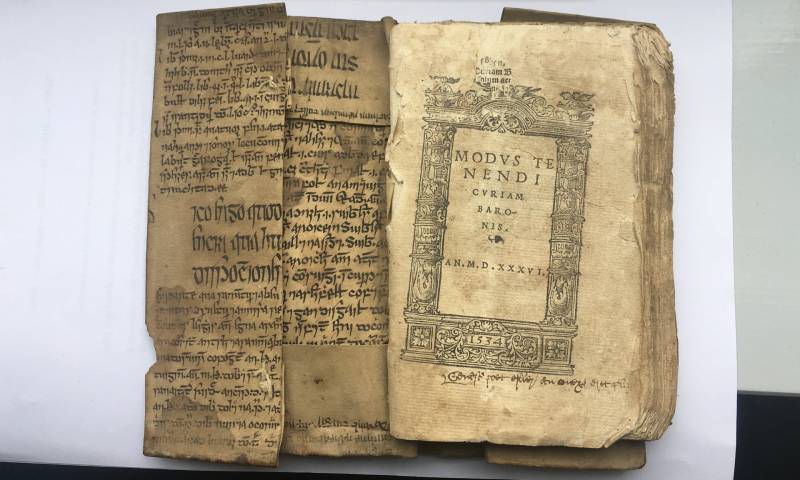
A recent discovery has revealed astonishing links between medieval western doctors from Ireland and Persia at the height of the golden age of Islamic learning, the Irish Independent reported.
The discovery further establishes that Irish doctors in the 1400s were exploiting medical knowledge from Persia, like using one if Ibn Sena’s famous medical to train young doctors. Ibn Sena (980–1037) is regarded as one of the most significant physicians, astronomers, thinkers and writers of the Islamic Golden Age. He has been described as the father of early modern medicine.
The discovery was made by a professor at University College Cork's Irish Department, Pádraig Ó Macháin after he became aware of an ancient book in the possession of a British family which had links to Ireland.
The book, printed in London in 1534/1536 had been in the possession of the British family, who are based in Cornwall, since that time.
However, the professor found the book had a much older connection than the 16th Century. By studying photographs of its’ binding, he realised it was a special cut-out from a 15th Century Irish vellum manuscript. He was also to determine that the inscriptions on the vellum involved some form of medical text and decided to seek assistance of Prof. Aoibheann Nic Dhonnchadha of the Dublin Institute for Advanced Studies, the only living expert on medieval Irish medicine.
Prof Nic Dhonnchadha confirmed the historic nature of the discovery - the first recorded translation into Irish of the 'Canon of Medicine' by Ibn Sena.
While it was suspected his texts must have been used by medieval Irish doctors in training, there had been no confirmed Irish translation of his work until now.
The spine of the 16th Century book contains and Irish translation from a Latin translation of Ibn Sena's work which was effectively a general guidebook to medical practice.
The Irish fragment contains parts of the opening chapters on the physiology of the jaws, the nose and the back.
It was clear that some Irish scholar had travelled overseas to train - and had been so impressed by Ibn Sena's knowledge and work that they decided to use a Latin translation as the basis for an Irish translation.
The discovery further establishes that Irish doctors in the 1400s were exploiting medical knowledge from Persia, like using one if Ibn Sena’s famous medical to train young doctors. Ibn Sena (980–1037) is regarded as one of the most significant physicians, astronomers, thinkers and writers of the Islamic Golden Age. He has been described as the father of early modern medicine.
The discovery was made by a professor at University College Cork's Irish Department, Pádraig Ó Macháin after he became aware of an ancient book in the possession of a British family which had links to Ireland.
The book, printed in London in 1534/1536 had been in the possession of the British family, who are based in Cornwall, since that time.
However, the professor found the book had a much older connection than the 16th Century. By studying photographs of its’ binding, he realised it was a special cut-out from a 15th Century Irish vellum manuscript. He was also to determine that the inscriptions on the vellum involved some form of medical text and decided to seek assistance of Prof. Aoibheann Nic Dhonnchadha of the Dublin Institute for Advanced Studies, the only living expert on medieval Irish medicine.
Prof Nic Dhonnchadha confirmed the historic nature of the discovery - the first recorded translation into Irish of the 'Canon of Medicine' by Ibn Sena.
While it was suspected his texts must have been used by medieval Irish doctors in training, there had been no confirmed Irish translation of his work until now.
The spine of the 16th Century book contains and Irish translation from a Latin translation of Ibn Sena's work which was effectively a general guidebook to medical practice.
The Irish fragment contains parts of the opening chapters on the physiology of the jaws, the nose and the back.
It was clear that some Irish scholar had travelled overseas to train - and had been so impressed by Ibn Sena's knowledge and work that they decided to use a Latin translation as the basis for an Irish translation.
